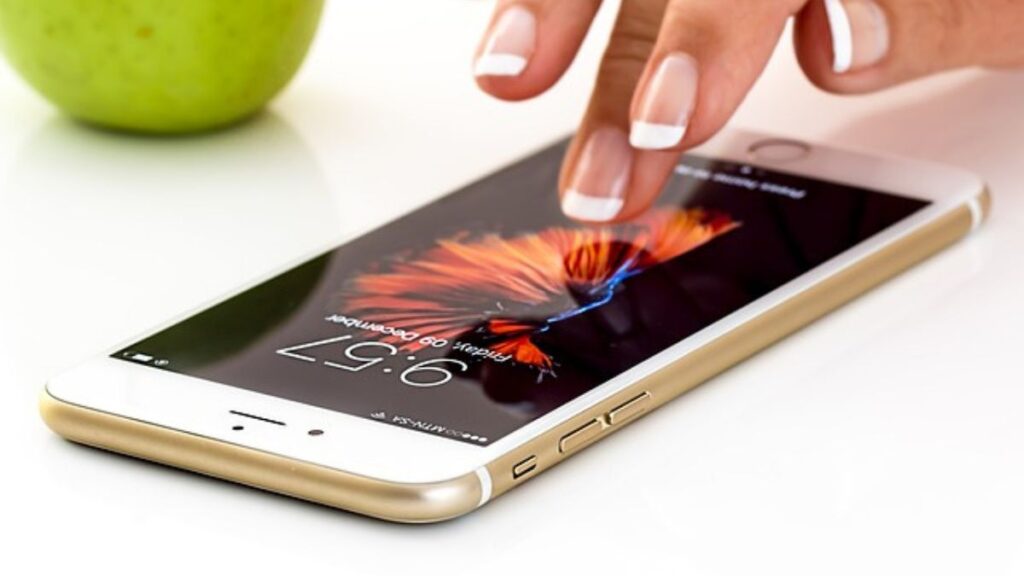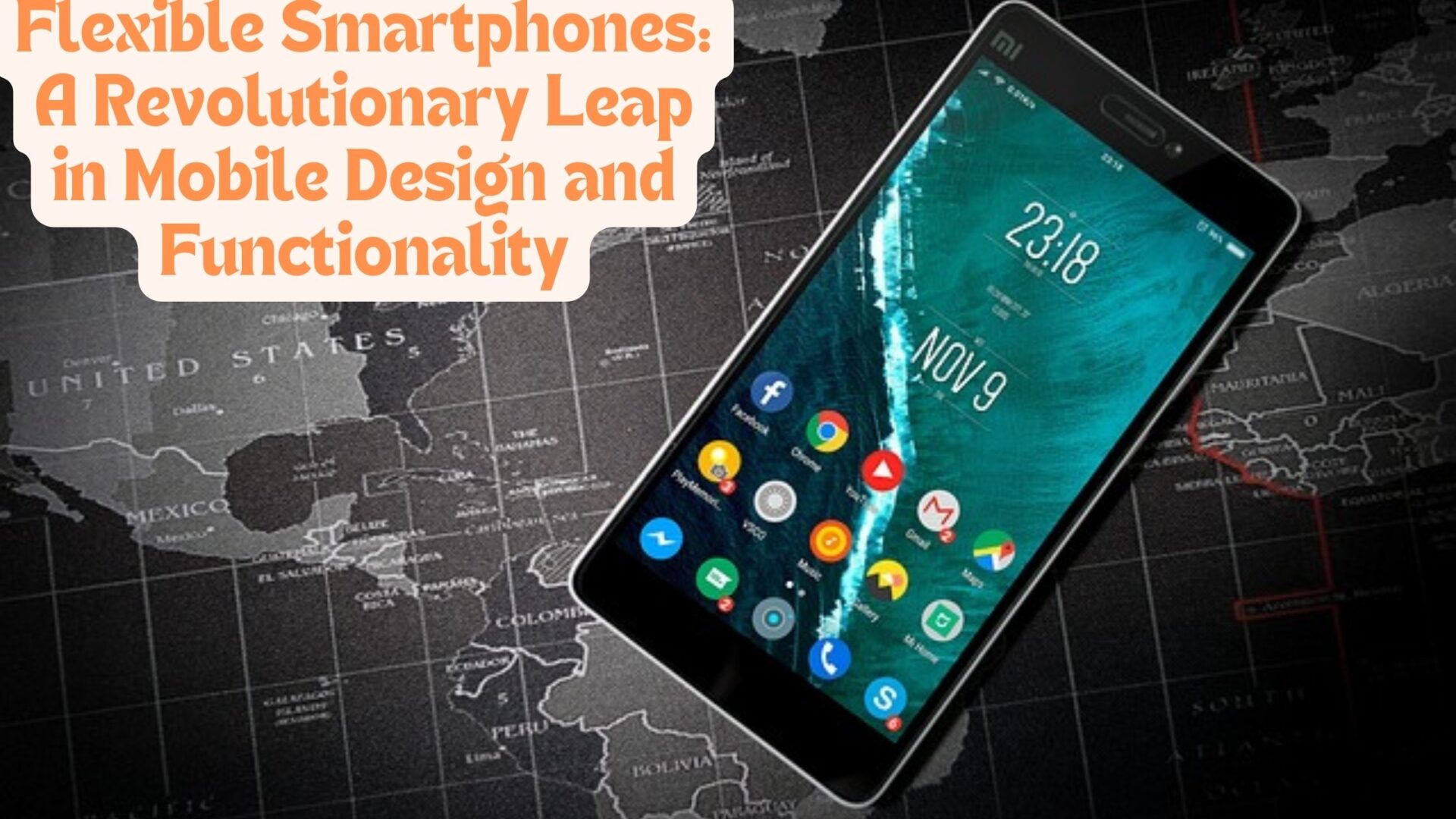Introduction
Flexible Smartphones: A Revolutionary Leap in Mobile Design and Functionality

In the ever-evolving world of technology, flexible smartphones are emerging as a groundbreaking innovation, poised to redefine the way we interact with our devices. These revolutionary gadgets are not just a fad; they represent a significant leap in mobile design and functionality. From enhanced user experiences to novel design possibilities, flexible smartphones are set to transform the tech landscape.
What are Flexible Smartphones?
Flexible smartphones, also known as foldable phones, feature screens that can bend, fold, or flex without compromising display quality or functionality. This innovation is made possible by advanced materials such as OLED (Organic Light Emitting Diode) technology, which allows for greater flexibility compared to traditional screens. Major tech companies like Samsung, Huawei, and Motorola have already introduced their versions of flexible smartphones, each offering unique features and designs.
Design and Durability
The design of flexible smartphones is one of their most compelling features. These devices can be folded to fit comfortably in a pocket or bag, and then unfolded to provide a larger screen for viewing videos, playing games, or multitasking. This duality offers unparalleled convenience and portability.
Moreover, the durability of flexible smartphones has been a focal point in their development. Manufacturers have invested heavily in creating screens that can withstand repeated folding and unfolding. Advanced polymers and hinge mechanisms ensure that these devices remain robust over time, addressing initial concerns about their longevity.
Enhanced User Experience
Flexible smartphones offer an enhanced user experience by combining the benefits of both a smartphone and a tablet. Users can enjoy a compact device for everyday use and switch to a larger display for more immersive experiences. This versatility is particularly appealing for multitaskers, gamers, and professionals who require more screen real estate for productivity.
Additionally, flexible smartphones are designed with multitasking in mind. Many models support split-screen functionality, allowing users to run multiple apps simultaneously. This feature enhances productivity and makes it easier to switch between tasks without the need for additional devices.
Innovative Applications
The advent of flexible smartphones has opened up new possibilities for app development and user interaction. Developers are now creating apps specifically optimized for foldable screens, offering unique features and functionalities. For instance, a mapping app can provide a broader view of a route when the phone is unfolded, while a video editing app can offer more controls and a larger preview area.
Furthermore, flexible smartphones are paving the way for new uses in fields such as augmented reality (AR) and virtual reality (VR). The larger, flexible screens can provide more immersive AR and VR experiences, transforming the way users interact with digital content.
Market Impact and Future Prospects
The introduction of flexible smartphones has had a significant impact on the mobile market. Consumers are showing increasing interest in these innovative devices, and sales are expected to grow substantially in the coming years. This trend is encouraging manufacturers to invest more in research and development, leading to continuous improvements in technology and design.
Looking ahead, the future of flexible smartphones appears promising. As technology advances, we can expect even more sophisticated designs, enhanced durability, and expanded functionalities. The integration of 5G technology will further amplify the capabilities of these devices, offering faster connectivity and improved performance.
Are flexible smartphones more durable than traditional smartphones?
Flexible smartphones, often called foldable smartphones, are designed with flexible displays and hinges, allowing them to be folded or bent without damaging the screen. The durability of flexible smartphones compared to traditional smartphones depends on several factors:

Advantages of Flexible Smartphones:
- Flexible Displays: The flexible OLED displays used in foldable phones can absorb impacts better than rigid glass screens, potentially making them less prone to shattering when dropped.
- Advanced Materials: Manufacturers use advanced materials like ultra-thin glass and polymer layers, which can be more resistant to scratches and impacts than traditional glass.
Challenges of Flexible Smartphones:
- Hinge Mechanism: The hinge mechanism can be a point of vulnerability. Over time, repeated folding and unfolding can lead to wear and tear or mechanical failure.
- Screen Protection: While flexible displays are durable, they may be more susceptible to pressure points and creases, especially if not handled carefully.
- Water and Dust Resistance: Traditional smartphones often have higher water and dust resistance ratings compared to foldable phones, which have more entry points for contaminants.
Improvements in Durability:
Manufacturers are continually improving the durability of flexible smartphones. Innovations include:
- Better hinge designs to withstand more folds.
- Enhanced screen protectors that reduce scratches and creases.
- Improved sealing mechanisms to enhance water and dust resistance.
Flexible smartphones have the potential to be more durable in certain aspects, such as impact resistance, due to their flexible displays. However, they also face unique durability challenges, particularly with their hinge mechanisms and overall structural integrity. Traditional smartphones, with their simpler designs and fewer moving parts, often offer better water and dust resistance and may be more reliable in the long term. Ultimately, the durability of a flexible smartphone will depend on the specific model and the technology used by the manufacturer.
How do flexible smartphones enhance multitasking capabilities?
Flexible smartphones enhance multitasking capabilities in several innovative ways:

1. Larger Screen Real Estate:
- Unfolded Display: When unfolded, flexible smartphones provide a significantly larger screen compared to traditional smartphones. This larger display allows users to have multiple apps open side-by-side, similar to a tablet or a small laptop.
- Split-Screen Mode: Users can run two or more apps simultaneously in split-screen mode, making it easier to multitask without constantly switching between apps.
2. App Continuity:
- Seamless Transitions: Flexible smartphones are designed to provide a seamless transition between folded and unfolded modes. For instance, if you’re using an app while the phone is folded, it can automatically expand and adjust to the larger screen when you unfold the device.
- Enhanced User Experience: This continuity enhances the user experience by allowing uninterrupted workflows and smoother transitions between different tasks.
3. Multi-Window Support:
- Multiple Windows: Many flexible smartphones support multiple windows, enabling users to open several apps in different windows simultaneously. This is particularly useful for productivity tasks, such as writing emails while referencing documents or browsing the web.
- Drag-and-Drop Functionality: With multi-window support, users can often drag and drop content between apps, enhancing efficiency and ease of use.
4. Task-Specific Modes:
- Flex Mode: Some flexible smartphones offer specific modes that take advantage of their unique form factor. For example, Samsung’s Flex Mode allows the screen to be partially folded, creating a dual-view experience where one part of the screen can be used for viewing content and the other for controls or additional information.
- App Adaptations: Many apps are being optimized to take advantage of the unique capabilities of foldable screens, providing enhanced functionality and better use of the available screen space.
5. Enhanced Gaming and Media Consumption:
- Immersive Experiences: The larger, flexible screens provide a more immersive experience for gaming and media consumption. Users can enjoy games, videos, and other media on a larger display, which can also be used to run background tasks like messaging or browsing without interrupting the main activity.
- Dedicated Controls: In some modes, the flexible design can offer dedicated controls or secondary screens for additional functionalities, such as game controls or media playback options.
6. Productivity Tools:
- Note-Taking and Drawing: The larger screen area is beneficial for tasks that require more space, such as note-taking, drawing, or editing documents. Some foldable devices also come with stylus support, further enhancing productivity.
- Virtual Meetings: With more screen space, users can participate in virtual meetings while keeping other essential apps or documents open, making it easier to reference materials or take notes during a call.
Flexible smartphones enhance multitasking by providing larger and more versatile displays, seamless app transitions, multi-window support, and task-specific modes. These features collectively improve productivity, efficiency, and the overall user experience, making flexible smartphones an appealing choice for users who need advanced multitasking capabilities.
Conclusion
Flexible smartphones represent a revolutionary leap in mobile design and functionality. With their unique designs, enhanced user experiences, and innovative applications, these devices are set to become a staple in the tech industry. As they continue to evolve, flexible smartphones will undoubtedly play a crucial role in shaping the future of mobile technology. Embracing this innovation will not only enhance our daily lives but also open up new possibilities for the way we interact with the digital world.
References
- Samsung Galaxy Fold: The Official Samsung Galaxy Site. Samsung. Link
- Huawei Mate Xs: The World’s Fastest 5G Foldable Phone. Huawei. Link
- Motorola Razr: Reinventing the Flip Phone. Motorola. Link
- OLED Technology Explained. OLED-Info. Link
- The Future of Foldable Smartphones. TechRadar. Link
- How Flexible Screens Work. HowStuffWorks. Link
- Foldable Phones Are Here, But Are They Worth It?. The Verge. Link
- The Rise of Foldable Smartphones. Wired. Link
- 5G Technology and Foldable Phones: A Perfect Match. CNET. Link
- Developing Apps for Foldable Devices. Android Developers. Link
